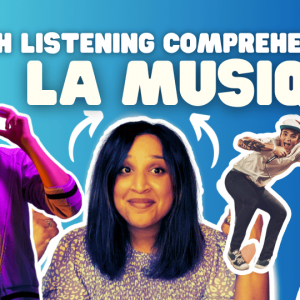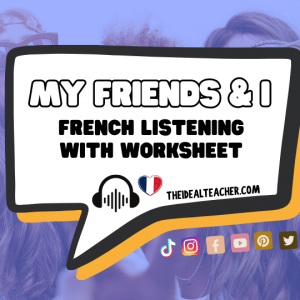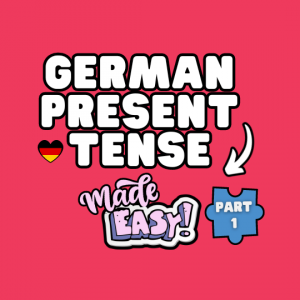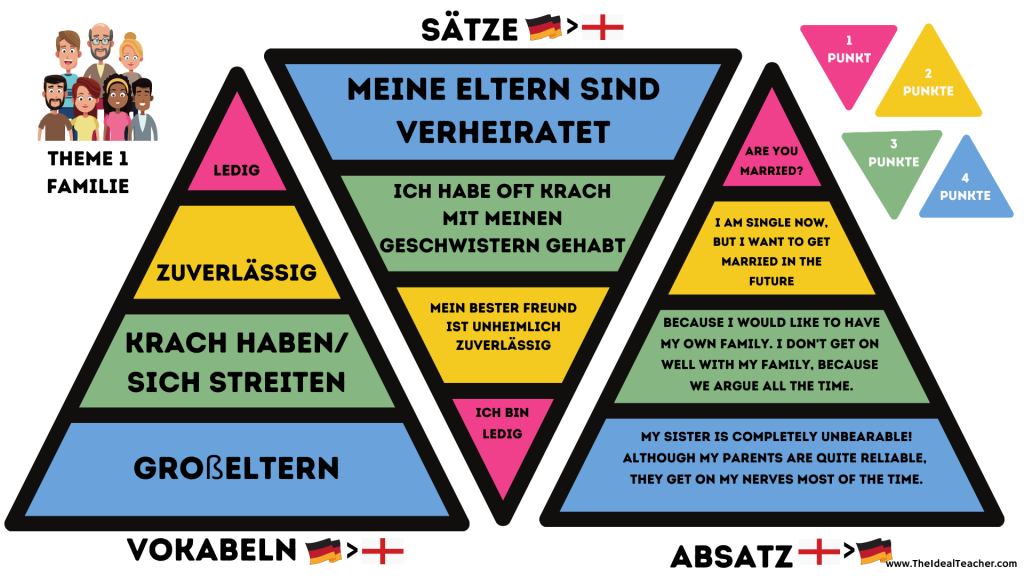 The Powerful Tool of Retrieval Practice in Language Lessons
The Powerful Tool of Retrieval Practice in Language Lessons
I am pretty sure that I always use retrieval practice to some extent in my language lessons. Many of you do too, but most probably without knowing what might be called?
 What is Retrieval Practice?
What is Retrieval Practice?
Retrieval practice is a very powerful learning strategy. Rather than continuing to cram students’ brains full of information, retrieval practice is actually the practice of getting knowledge out of a student’s brain. The process or retrieval has been proven to improve language retention.
As language teachers, we promote retrieval practice in our lessons to assess learning. Consider: vocab testing, questioning, mini-quizzes, low-stakes testing, ‘brain dumps’, plenaries etc. All of these methods allow students the opportunity to remember what they have learnt. If you then provide instant feedback, they can reflect. However, this process shouldn’t stop there to have the best effects. It needs to be repeated to improve retention and learning.
 Research and Background
Research and Background
Roediger and Karpicke carried out a study in 2006 which compared how students performed after different combinations of studying and/or being tested on material. Their research illustrated that:
study followed by a test, where students wrote everything they could remember down, led to better recall in a final assessment than being given an additional study opportunity before the final assessment.
This illustrates that getting students to ‘say / show’ what they can remember after input is key to retention. It leads to better learning and understanding, than simply being put in a test situation after revision and study.
Am I using retrieval practice in my language lessons already? Well, if you’re doing a plenary, then yes! Think of asking students to write 3 things they have learnt, they are ‘writing down what they remember’. Thus, ‘retrieving’, ergo practising retrieval!
Spaced Retrieval Practice
Something that was noteworthy about Roediger and Karpicke’s research was that this advantage was most prevalent after a two-day or one-week delay, i.e. ‘spaced retrieval’. That’s to say that if recall was assessed after just a few minutes, the students produced better results immediately after studying.
Clearly, we can’t just continually give input to our students, test them straight after and expect that they will remember it in the future. No, it is important to employ spaced repetition to help retention in long-term memory. Don’t just get them to recall once, keep doing it over a period of days, weeks and months. You could keep a note of key terms/vocab in your planner, put slips of paper in a group’s drawer or file, or add them to a PPT template before the end of each lesson.
Don’t forget to allow the students to self-assess and self-mark to get immediate feedback, as this helps in the learning process.
Retrieval Practice in Language Lessons
I explained a bit more in April 2018 what it is, how it’s used, as well as an example of retrieval practice grid that I had put together for an English group if you’re interested in a bit more theory behind the concept.
These are some of the retrieval practice ideas for language lessons, teachers and students that I have shared on my blog over the last few years. It’s been quite a trip down memory lane, scouring my posts! I’ve decided to put them all together here and I’ve also included some newer strategies that I have been using in my lessons but haven’t yet blogged about. Let me know what you think in the comments below!
1. What Am I Thinking?
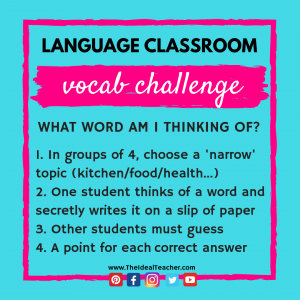 I originally came across this fabulous vocabulary retrieval activity (for short term memory!) in my first year of teacher training. The Head of French used it as a plenary at the end of her Y8 lesson. The topic was restaurant food and drink, but you can do it on anything!
I originally came across this fabulous vocabulary retrieval activity (for short term memory!) in my first year of teacher training. The Head of French used it as a plenary at the end of her Y8 lesson. The topic was restaurant food and drink, but you can do it on anything!
The group loved it and the vocabulary challenge really got the students involved in retrieving the vocabulary they had come across during the lesson. The cool thing was that the teacher had insisted that the students not write anything down during the lesson. So, it really was a case of retrieval. This teacher used the activity as a plenary with the whole group. I think this fun language strategy would also work well in small groups/teams, using the same principle. Super fun, quick and easy!
2. Traditional Retrieval Practice Grid Challenge
 This is the retrieval practice grid I shared in April 2018 (linked above) and I have used it ever since, just adapting the content. This is a nice challenge, as it considers lexical items learnt over a longer period than the vocabulary retrieval ‘what am I thinking?’ above. I use this as a starter, a plenary and a little competitive activity for my groups. There are quite a few different variations that I have seen online since. The key is though, they are all getting students to retrieve language that they have seen before and it should be spaced. Use these grids regularly, removing text and replacing it with newly learnt material.
This is the retrieval practice grid I shared in April 2018 (linked above) and I have used it ever since, just adapting the content. This is a nice challenge, as it considers lexical items learnt over a longer period than the vocabulary retrieval ‘what am I thinking?’ above. I use this as a starter, a plenary and a little competitive activity for my groups. There are quite a few different variations that I have seen online since. The key is though, they are all getting students to retrieve language that they have seen before and it should be spaced. Use these grids regularly, removing text and replacing it with newly learnt material.
3. Quick Fire!
 I question students throughout my lessons, using the hands-up, ‘no-hands up’ method, as well a name randomiser and lolly pop sticks. This helps me to assess their understanding after input and study and is one method of low-stakes testing. Which basically means students can practise material and make mistakes – it assists in learning but don’t have any relevance to a final grade. Quick fire questions as retrieval practice works well by ‘firing’ questions at students for them to check what they can recall.
I question students throughout my lessons, using the hands-up, ‘no-hands up’ method, as well a name randomiser and lolly pop sticks. This helps me to assess their understanding after input and study and is one method of low-stakes testing. Which basically means students can practise material and make mistakes – it assists in learning but don’t have any relevance to a final grade. Quick fire questions as retrieval practice works well by ‘firing’ questions at students for them to check what they can recall.
An even better way to present quick fire questions as a retrieval strategy is to gets all students involved. You give the students the questions on a sheet, or read them out one at a time and get the students to write their answers as you go. Give students the answers, allowing them to self-correct. Do another round of quick fire questions, using some of the same questions after a few days or the following week. Repeat!
 4. Write About X From Memory
4. Write About X From Memory
Remember the research on retrieval practice above? Part of retrieval practice is ‘brain dumping’. Get students to write / say what they can about anything they’ve learnt in the past topic, current topic etc as a form of recall. You could give the students a word count or just present the information as they want. The research shows that doing this after input is helpful and spacing this repetition out, is even more useful.
5. Summarise in 15/45/100 Words
This is similar to a brain dump, but it’s a bit more focused and gets students to retrieve the most relevant key information and structure the information a little more.
6. Flash Cards
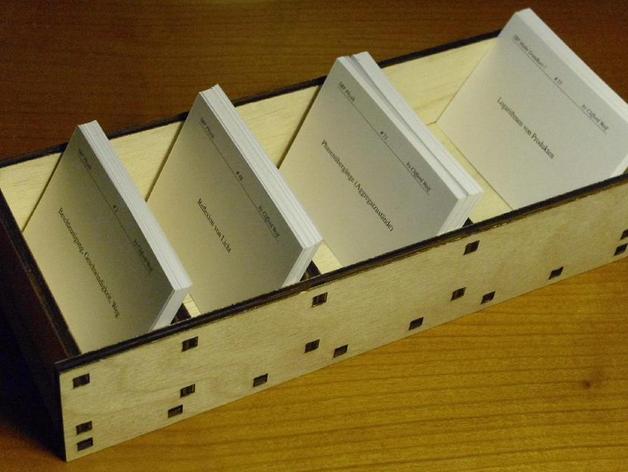 This is quite a ‘rudimentary’ form of retrieval but works amazingly well! I remember a student’s mum telling me that she used to have a box with four compartments in it. Also, that she used it to learn vocabulary. In fact, she showed me that all the flash cards (TL on one side and English on the other) started in the first box. She’d look through them on one day and practise one by one. Then, a few days later, she’d do it again, moving those she knew back and leaving those she didn’t in the first compartment. She repeated this over a week or two, repeating the sequence until all the flash cards were at the back. I asked her if she remembered that it was called a Leitner box and she remembered!
This is quite a ‘rudimentary’ form of retrieval but works amazingly well! I remember a student’s mum telling me that she used to have a box with four compartments in it. Also, that she used it to learn vocabulary. In fact, she showed me that all the flash cards (TL on one side and English on the other) started in the first box. She’d look through them on one day and practise one by one. Then, a few days later, she’d do it again, moving those she knew back and leaving those she didn’t in the first compartment. She repeated this over a week or two, repeating the sequence until all the flash cards were at the back. I asked her if she remembered that it was called a Leitner box and she remembered!
The Leitner system is a widely used method of using flashcards, proposed by the German science journalist Sebastian Leitner in the 1970s. The methodology is the implementation of spaced repetition, where cards are reviewed at increasing intervals. The use of spaced repetition has been proven to increase rate of learning. If you’re interested in a similar box to recommend to students (absolutely not necessary!) then this A7 flashcard box comes in loads of colours and does the same kind of thing as a Leitner box. It’s a bit on the £££ side, but might be nice to give someone as a gift?
7. Draw What You Remember
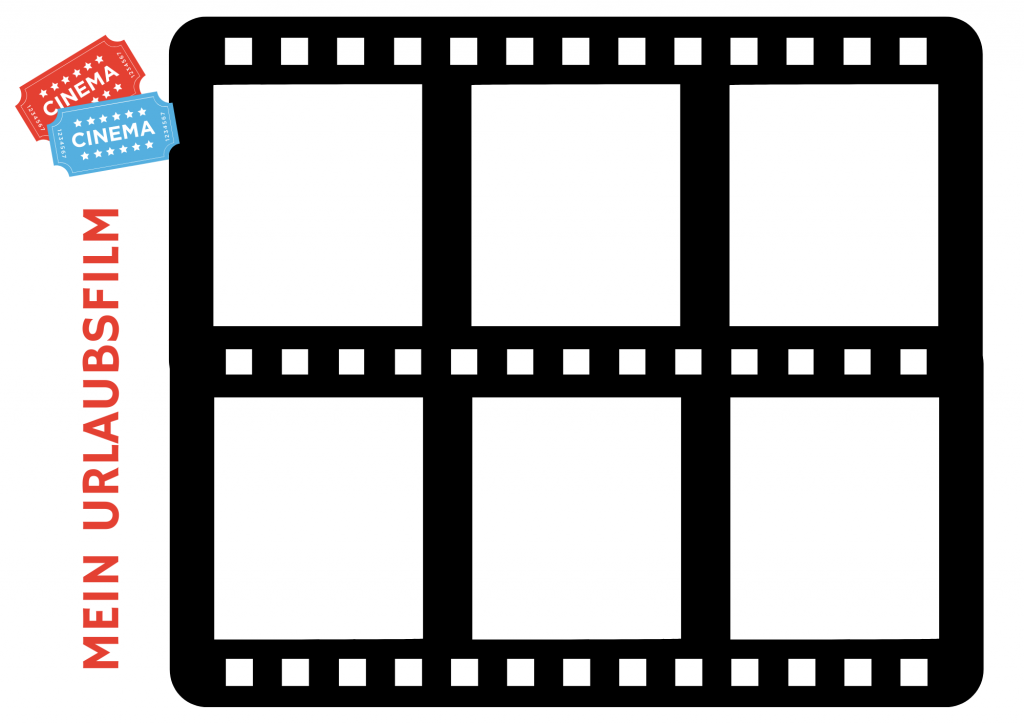 This is tricky for some topics, but works well for house, food and drink, animals, appearance type topics etc. It’s a creative way to get beginners to think about what they can remember and draw it. It works well on just some A4 paper or in their exercise books.
This is tricky for some topics, but works well for house, food and drink, animals, appearance type topics etc. It’s a creative way to get beginners to think about what they can remember and draw it. It works well on just some A4 paper or in their exercise books.
I guess it could be done with other topics and more advanced students, at GCSE and even A-Level level. For example, the topic of holidays lends itself nicely. A student draws a storyboard or film reel of a holiday that they could describe. It’s a bit more creative than just writing or just speaking. They could then use their drawings to tell a neighbour what they can remember as a narrative.
 8. Language Retrieval Pyramid – Vocab, Sentence, Paragraph
8. Language Retrieval Pyramid – Vocab, Sentence, Paragraph
I wanted a variation on the retrieval grid that I mentioned earlier. So, I created this language retrieval pyramid which works in the same way. Students collect points based on vocabulary, sentence and paragraph translations. I have used English to Target Language, as well as Target Language to English.
The retrieval activity for language lessons awards points by colours. Each coloured section contains vocabulary or structures that were revised/met the same number of weeks/lessons ago. For example, award 1 point for something the students learnt 1 lesson ago. I’ve adapted it for my French and German lessons and it works quite well! Additionally, the answers are on the second slide so yous can give students instant feedback. This will help in the lead up to examinations. How many points can your language students achieve?!
There you have it! A few useful retrieval practice ideas for language lessons. Remember: don’t just do it once, repeat it and ensure students get feedback straight away to make these simple retrieval practice ideas effective in your language lessons.
If you’re interested in learning more about retrieval practice, then consider reading the resources below.
References and Further Reading
Firth, J. (et al) ASSESSMENT AS LEARNING: THE ROLE OF RETRIEVAL PRACTICE IN THE CLASSROOM, https://impact.chartered.college/article/firth-assessment-as-learning-role-of-retrieval-practice-in-classroom/ (2017)
McDaniel, M. A., Agarwal, P. K., Huelser, B. J., McDermott, K. B., & Roediger III, H. L. (2011). Test-enhanced learning in a middle school science classroom: The effects of quiz frequency and placement. Journal of Educational Psychology, 103(2), 399.
Brown, P. Roediger H., McDaniel M, Make It Stick: The Science of Successful Learning (2014)
Roediger HL and Karpicke JD (2006) Test-enhanced learning taking memory tests improves long-term retention. Psychological Science 17: 249-255.
JOIN ME ON MY SOCIALS FOR MORE FAB TEACHING CONTENT >>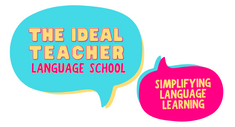
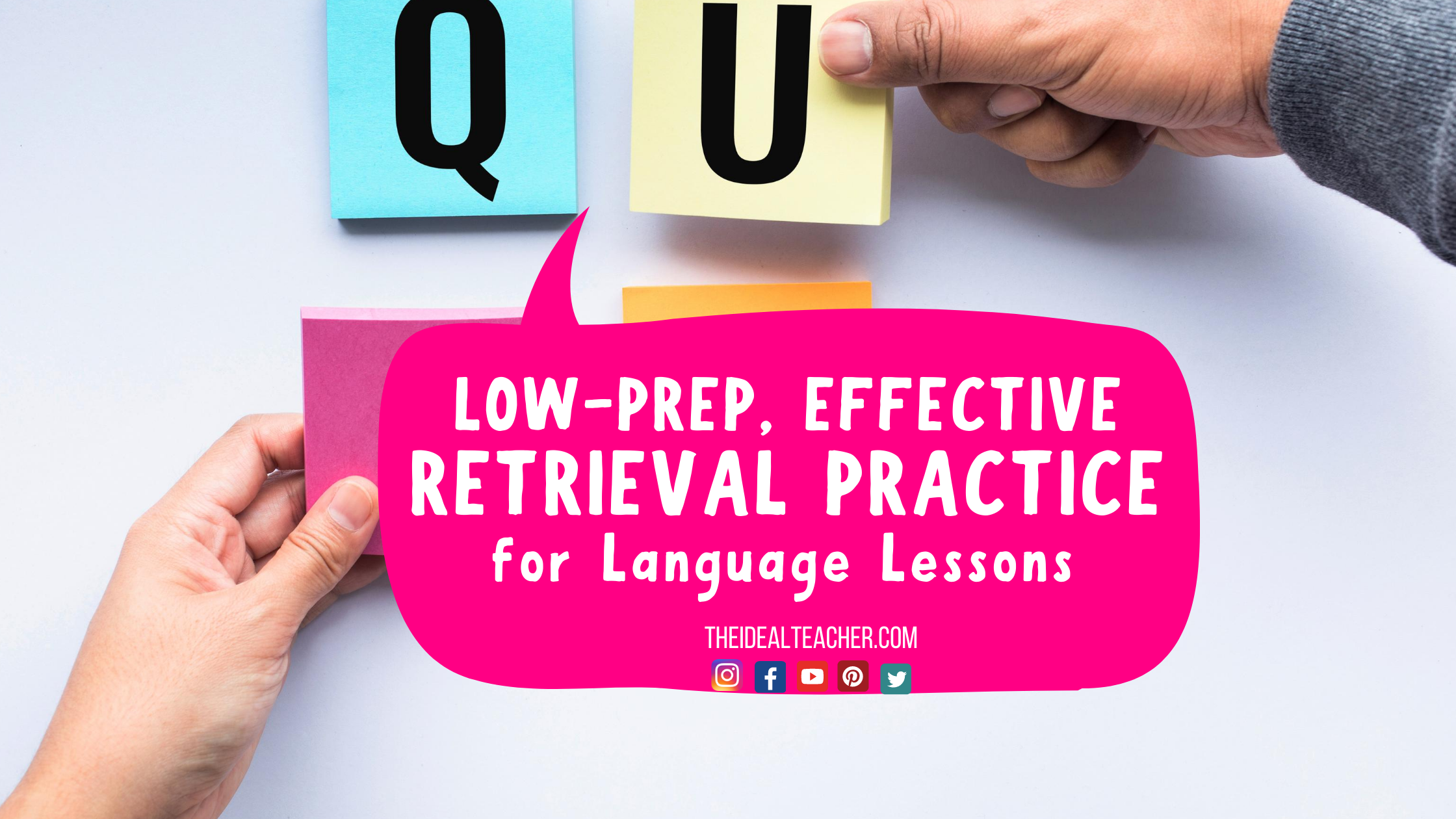
 What is Retrieval Practice?
What is Retrieval Practice? Research and Background
Research and Background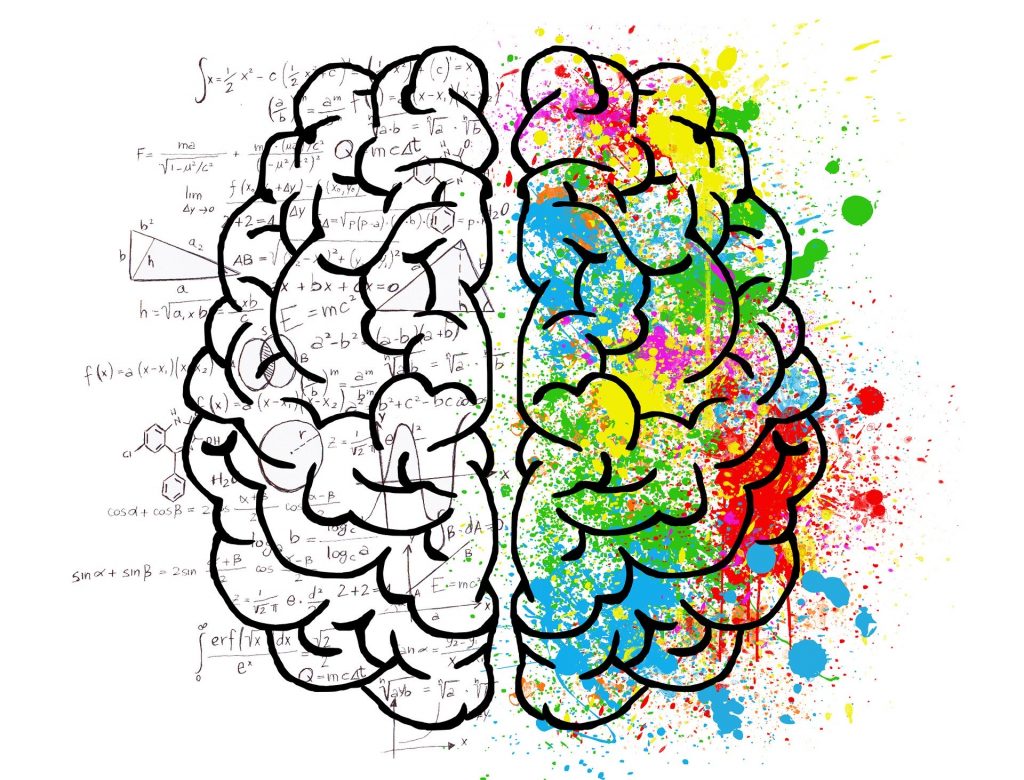 4. Write About X From Memory
4. Write About X From Memory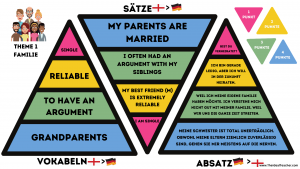 8. Language Retrieval Pyramid – Vocab, Sentence, Paragraph
8. Language Retrieval Pyramid – Vocab, Sentence, Paragraph